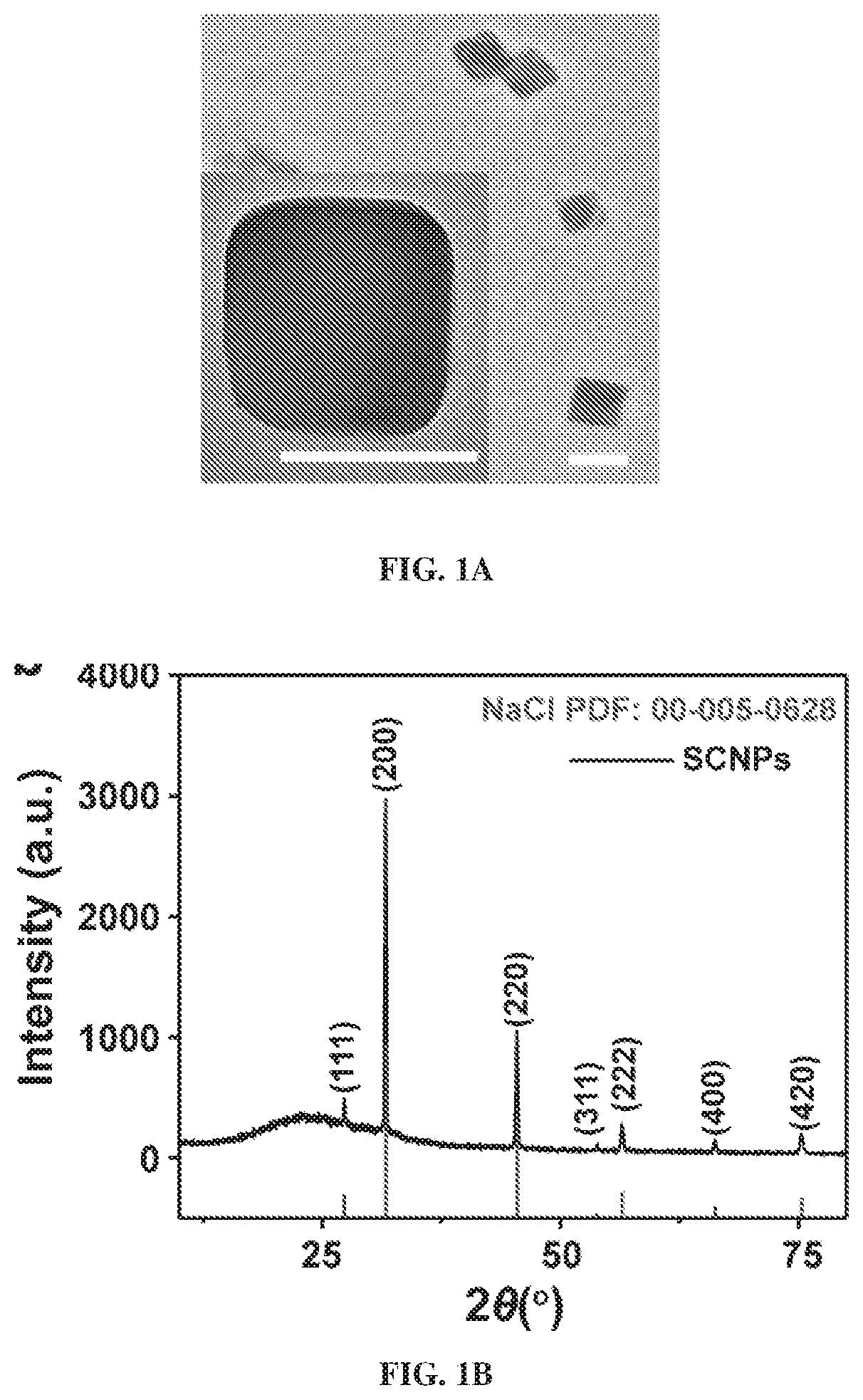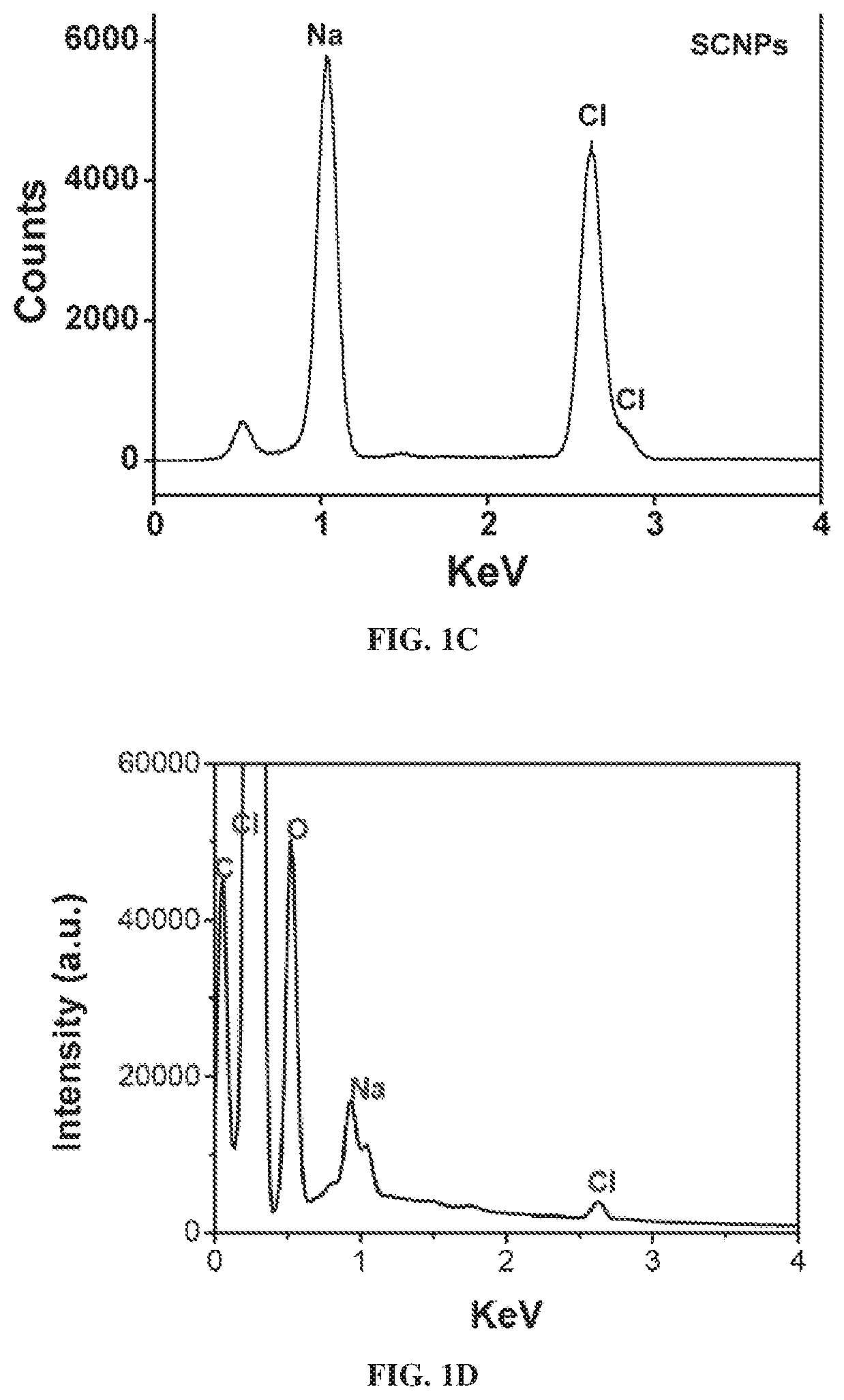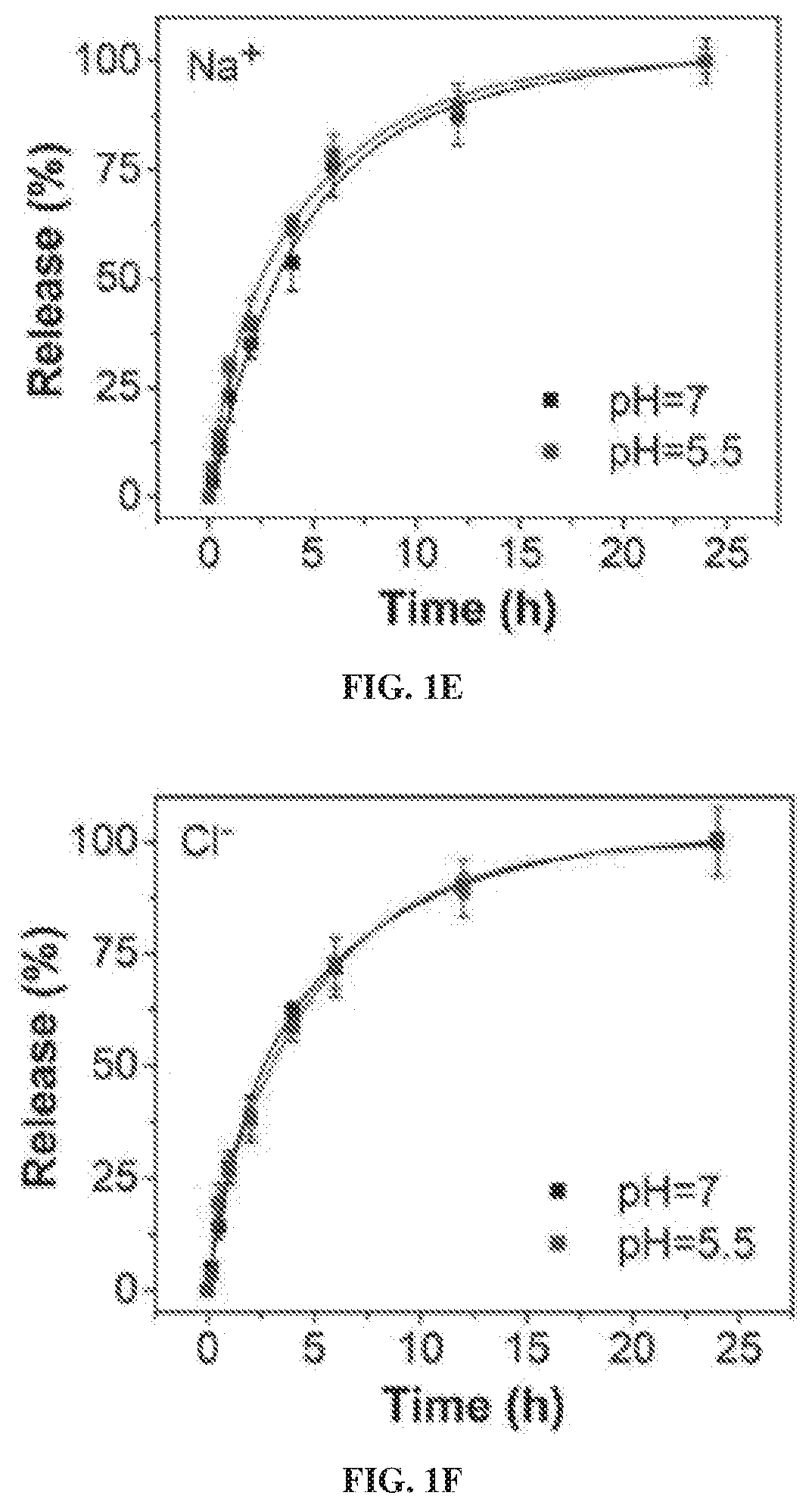Salt nanoparticles and compositions and methods of use thereof
- Summary
- Abstract
- Description
- Claims
- Application Information
AI Technical Summary
Benefits of technology
Problems solved by technology
Method used
Image
Examples
example 1
particle Synthesis and Degradation
Materials and Methods
[0230]Synthesis of Sodium Chloride Nanoparticles (SCNPs).
[0231]In a typical synthesis, 20 mg of sodium oleate (TCI, 97%, Lot No.: W76EGFQ), 1 mL of oleylamine (70%, Sigma-Aldrich, Lot No.: STBF9554V) and 50 mg 1,2-tetradecanediol (90%, Sigma-Aldrich) were dissolved in a mixed solution containing 10 mL hexane (99.9%. Fisher) and 10 mL ethanol (99.9%, Fisher). Into the mixture, 15 mg of molybdenum (V) chloride (95%, Sigma-Aldrich, Lot No.: MKBQ9967V) was added and the solution was magnetically stirred for 24 h at 60° C. The raw products were collected by centrifugation at 12000 RPM for 10 min. The particles were redispersed in hexanes with brief sonication and the centrifugation / hexane washing process was repeated 3 times to remove unreacted precursors.
[0232]Phospholipid-Coated Sodium Chloride Nanoparticles (PSCNPs).
[0233]The above-synthesized SCNPs (10 mL) in hexane were sonicated for 30 s and mixed with 80 μL phospholipid soluti...
example 2
particles are Taken Up by Cells and can be Cytotoxic
Materials and Methods
[0241]Cell Culture.
[0242]4T1 (murine mammary carcinoma). HT29 (human colorectal adenocarcinoma), A549 (human lung carcinoma), SGC7901 (human gastric adenocarcinoma), PC-3 (human prostate adenocarcinoma), UPPL-1541, (murine bladder carcinoma), t24, UMUC2 cells were grown in RPMI-1640 (Corning, 10-040-CV). U87MG (human glioblastoma) and RAW264.7 cells (murine macrophage) were grown in DMEM (Corning, 10-013-CV). B16-F10 (murine melanoma) and BBN963 cells were grown in high glucose DMEM (ATCC® 30-2002™). SCC VII cells (murine head and neck squamous carcinoma) were grown in Corning® DMEM (Dulbecco's Modified Eagle's Medium) / Hams F-12 50 / 50 Mix (Corning, 10-090-CV). All the cell culture medium were supplemented with 10% fetal bovine serum (FBS) and 100 units / mL of penicillin and 100 units / mL streptomycin (MediaTech, USA). Human primary prostate epithelial cells (HPrECs, ATCC, PCS440010) were maintained in serum free ...
example 3
particles Induce Cancer Cell Apoptosis
Materials and Methods
[0252]Mitochondrial Electric Potential (ΔΨm).
[0253]The change of mitochondrial membrane potential was measured by a JC-1 mitochondrial membrane potential detection kit (Biotium, Cat No.: 30001). The JC-1 working solution was prepared by adding 10 μL of the concentrated dye to 1 mL of FBS-free RPMI medium. PSCNPs (52.5, 105, or 160 μg / mL), PBS, and NaCl (160.0 μg / mL in PBS) were incubated with cells for 6 h. The medium was removed and replaced with the JC-1 working solution and the incubation took another 15 min. The stained cells were analyzed on an Array Scan VII reader by analyzing Ch2 (green, JC-1 monomeric dye), and Ch3 (red, JC-1 aggregated dye) signals. The red / green ratio was analyzed by HCS Studio 2.0 Target Activation BioApplication software (Thermo Scientific, MA).
[0254]Oxygen Consumption Rates (OCR).
[0255]PC-3 cells (20,000 / well) were seeded in Seahorse XFe 24 assay plates and cultured in 250 μL of RPMI1640 medium...
PUM
| Property | Measurement | Unit |
|---|---|---|
| Nanoscale particle size | aaaaa | aaaaa |
| Nanoscale particle size | aaaaa | aaaaa |
| Amphiphilic | aaaaa | aaaaa |
Abstract
Description
Claims
Application Information
 Login to View More
Login to View More - R&D
- Intellectual Property
- Life Sciences
- Materials
- Tech Scout
- Unparalleled Data Quality
- Higher Quality Content
- 60% Fewer Hallucinations
Browse by: Latest US Patents, China's latest patents, Technical Efficacy Thesaurus, Application Domain, Technology Topic, Popular Technical Reports.
© 2025 PatSnap. All rights reserved.Legal|Privacy policy|Modern Slavery Act Transparency Statement|Sitemap|About US| Contact US: help@patsnap.com



